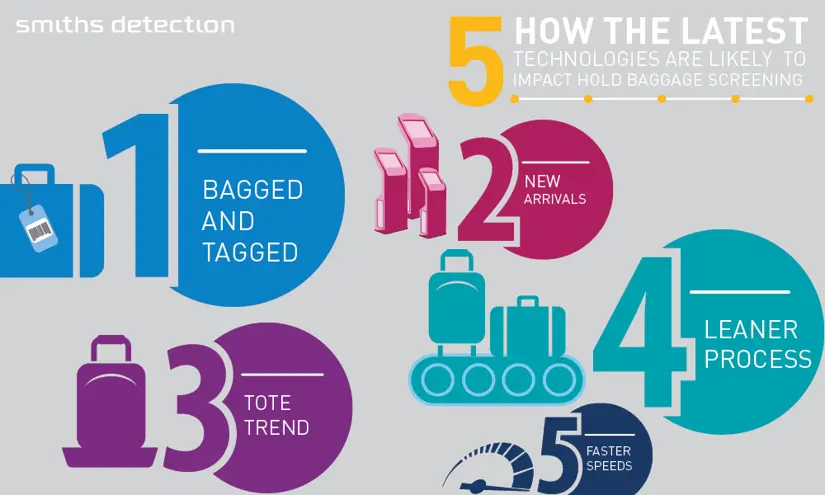How the latest technologies are likely to impact hold baggage screening
Airport security is on the brink of a major transformation set to make the process safer and more efficient. Biometrics, CCTV, risk based assessment, advanced lanes and innovative handling features are just some of the technologies currently being explored – and in some cases trialled – at airports around the world. But what impact will these new concepts have on hold baggage screening and handling systems?
Bagged and tagged: Bags are already tagged, tracked and moved around vast airport networks but the biggest change is likely to be electronically linking each piece of luggage to its owner right from check-in through to gate – with demand also growing to link scanning to the passenger’s risk profile. This will support risk-based screening and lower both equipment and operational costs.
New arrivals: The way hold baggage arrives for screening is also likely to change. The typical check-in desk is already complemented by kiosks and online check-in with bag drops around the airport and this may ultimately extend to other external drops such as hotels or even home pick-up services. Screening infrastructure would have to adapt accordingly.
Tote trend: Tote-based baggage handling is a fast growing trend already practiced at several major airports. Each piece of luggage is carried all the way through the screening system and on to the hold in a separately controlled tote (a bin or box). It is faster and more efficient and can lower costs by reducing tracking errors, bag jams, manual handling and loading.
A leaner process: Complementary screening technology and an innovative on-screen-resolution concept, some new generation ECAC Standard 3 approved scanners use a three level screening process. This simplifies the layout of the baggage handling system and, in turn, reduces costs, space, maintenance, spare parts, suppliers and training.
Faster speeds: Screening technology is speeding up the process and the baggage handling system will need to cope with this faster throughput. Current speeds of <0.5m/sec cause bottlenecks between check-in and the hold – so higher belt speeds, fewer touchpoints, less manual handling and optimised on-screen resolution will in future be key factors in the pursuit of increased efficiency.
With technology and regulatory requirements continually evolving, hold baggage handling and screening will have to adapt. The transition to ECAC Standard 3 is undoubtedly causing an upheaval but the benefits should ultimately outweigh the problems – other developments in the future should, perhaps, also be welcomed for the improvements they will bring to security and efficiency.

